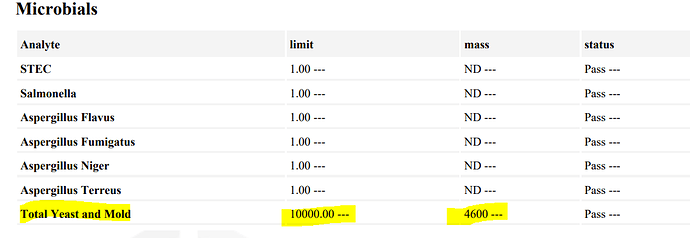Hey guys, anyone out there have an in-house test for yeast&mold? The labs here in OK use either a ‘plating’ or qPCR method. I’ve seen a couple of plating test kits that seem like they might work, but I’m not sure on the sample preparation. If anyone has an in house test for yeast/mold, I’d love to hear more.
The test I’m looking at trying: https://multimedia.3m.com/mws/media/1505478O/3m-petrifilm-plates-brochure.pdf
Are you looking to identify specific contaminants? Plating test kits are pretty old school but if you have a good understanding of microbiology and aseptic technique, or know someone who does — it can be relatively straightforward. There’s a lot to it, unfortunately.
Looks great for colony counting. It’s just easier-to-use selective media. More convenient than traditional plating, but same principle. The Rapid Plate Portfolio looks like it would be your best option, but don’t expect these petrifilms to tell you exactly what you’re dealing with.
Not really lookiong to identify specific contaminants, The COAs we get back from the labs here are just labeling the test of interest ‘total yeast and mold’ (see below snip from COA)
I have a background in chemistry but my experience with this type of testing is pretty limited. would a ‘colony count’ be equivalent to total yeast and mold?
Pretty much!
It could also exclude bacteria…
I suspect you’d have to be mistreating the pertifilm (and weed!) if your colony counts included archaea
I used pertifilm to cover “mold & mildew” “in house” in OR early in their medical legalization. Flew for about 3months before the rules changed.
Rules also specified “biologist” and “trained”. Aseptic technique is an acquired skill, but most seem to pick it up quickly.
This might be slightly OT, but I talked to these guys at Cannabis Conference. They make a sensor for the grow room for microbes and pollen:
You do not need anything more advanced than this for in house testing. I personally would not feel comfortable treating these rapid plates as quantitative data but utilizing them as an indicator works great.
A rapid aerobic count plate would work well as an indicator (are the 3m plates discontinued?)
If you get a positive detection send that batch to a testing lab with proper equipment and validated methods.
I would suggest some extra simple measures that could boost confidence including a positive and negative sample.
You can run a positive spike with something serious like a micro CRM:
or if running qualitatively:
Then run a negative “blank” with your water/diluent/growth mix. If you want a real negative test you need to buy a negative CRM but I would save the money.
The MC pads use these buffers/nutrient blends as diluents depending on the application.
Peptone water, Butterfield’s phosphate buffer, sterile physiological saline or sodium citrate
Obviously do not use water from the tap for mixing these as it contains trace chlorine which can inhibit growth. Get something meant for the job.
Additionally you need an incubator to maintain temperature, and a certified thermometer to monitor the incubator never hurts.
Long as you sterilize the inside of a vacuum oven or radiant heat oven you can use it as an incubator.
Nah - they still exist. And you can get the petrifilm ones from them pretty easy. Your local laboratory supply shop will have them available (3M partner distributors anyway). Like these.
They have a whole start-up kit.
I’d make sure to have an incubator (or any other enclosed temperature and humidity controlling device) that you can monitor temperature and humidity in.
Plus also a plate counter - which you can make yourself…or you can get one for like $500-1500 dollars depending on the bells and whistles. This makes it a lot easier to do the counting - and you can do the counts more than once. I know people who count without one, using a permanent marker or something…makes it super hard to recount or show the plate to someone after.
